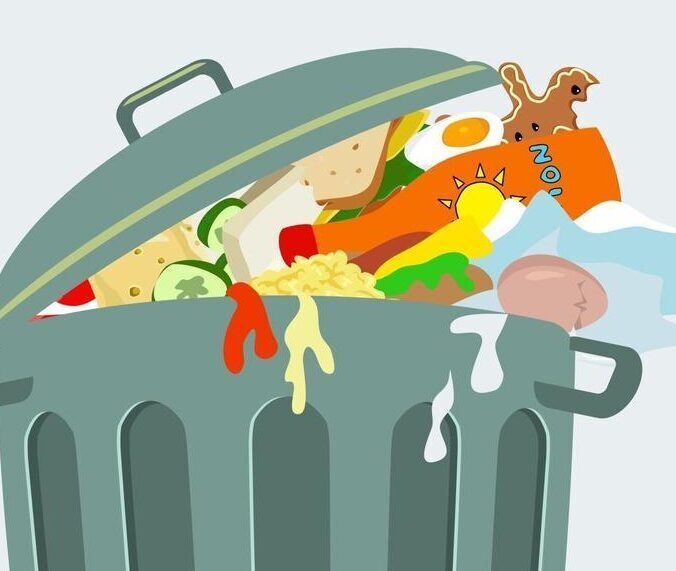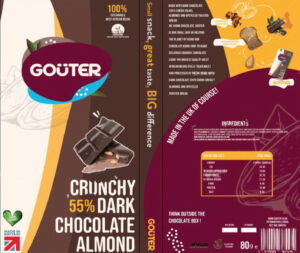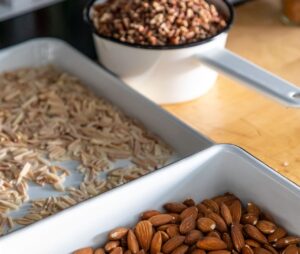Seven Easy Ways to Reduce Your Food Waste
An unbelievable 1.6 billion tons of food is wasted every single year across the world. With such an inconceivable amount wasted, you might feel guilty when your food spoils at home. But, there are ways we can reduce food waste, save money and start to build a more sustainable lifestyle in the kitchen.
What Food is Most Wasted?
What are the main food waste culprits? According to the anti-food waste app Too Good To Go, the majority of food waste comes from fresh fruit and vegetables, followed by cereals including rice and bread.
Where Food Gets Wasted
Food can be wasted at all stages of the chain, including:
- 44% of food waste in developed nations, such as the UK, occurs at the retail and consumer level. As food appears like an endless resource and we lose our connection to where it comes from, it’s easy to become picky and wasteful.
- ‘Ugly’ fruit and vegetables are discarded before even making it to shelves as retailers either refuse to buy oddly shaped or miscoloured produce, or consumers leave these less perfect looking items on shelves.
- Food can be lost during production and packaging or during transit from farm to store.
- Manufacturers can bin ingredient offcuts because it’s uneconomical to find alternative means of using their spare parts or consumers who show preferences such as not eating crusts or discarding apple cores, etc.
- Consumers can over-estimate needs or portions, leaving leftovers to the feed the bin.
Ways to Reduce your Food Waste
- Buy Products that Use Industry Food Waste
Seeing as a huge amount of food waste can occur before it even reaches our table, it makes sense to support companies that tackle this waste head-on and use food that would otherwise go to waste.
At GOÜTER, one of our key principals is to use rescued local bread and transform it with nuts and high-quality chocolate into a snack that embraces waste. With a staggering 44% of bread baked in the UK ending up in waste, (with almost half of this coming from industrial waste) we aim to intervene before this perfectly edible bread is wasted again.
- Make a Meal Plan
Plan and prepare a week’s worth of meal in advance. So, when you go shopping, you only buy what you’ll use.
- Use Vegetable Scraps for Homemade Stock
If you’ve never made your own vegetable stock from scratch, you’re in for a treat! It couldn’t be easier to make a stock using veggie scraps that would otherwise be binned.
- Save your vegetable scraps, including carrot and potato peel, pepper cores, onion and garlic ends, broccoli stalks. Collect your fresh produce over a few days in a container in the fridge.
- Add your veg scraps to a large saucepan and cover with cold water. The veg should be submerged. Bring the water to a boil and then leave a lid on the pan and let the stock simmer for 1 to 1.5 hours. It should look a deep reddish-brown colour, although this will depend on the type of veg you use.
- Turn off the heat and allow the stock to cool. Then use tongs or a large spoon to remove the large chunks from the water. Drain the liquid through a fine sieve to remove excess bits of veg.
- Transfer your stock to an airtight container and use it in your favourite recipes. Use within a few days.
- Compost
Use the veg from your homemade stock or any other food waste and brown matter (clean kitchen towels, leaves, twigs etc.) to start your own compost. Put your food waste to use by feeding your garden with organic matter. If you don’t have a garden, lookout for drop off points at local farmer’s markets or composting centres near you.
- Choose ‘Ugly’ Veg
Although most ugly fruit and veg don’t even make it to supermarket shelves, make it your mission to shop for this less perfect fresh produce when you get a chance. These foods are often avoided because we are so used to perfectly round tomatoes, vibrantly coloured sweet potatoes and straight carrots. In reality, food isn’t supposed to be perfect, so embrace the misshapen nature of your favourite loose fruits and veg.
UK supermarket Morrisons sell ‘Wonky fruit and veg’ which is often cheaper than the alternatives, so your bank account will thank you.
- Clean Out Your Fridge
Although we all love a full fridge, it can become a problem when you don’t know exactly what you have and what needs eating first.
To avoid waste, don’t overstock your fridge so you can clearly see what ingredients you have and practise the FIFO method. This refers to using food by the ‘first in, first out’ rule where you use older food before any newer purchases to ensure you continuously cycle through food that will perish first.
- Expiration Dates
Think of expiration dates as a general guide. Take the date with a pinch of salt and use your better judgement to decide whether your food is still worth using. The date on products usually refers to when the product is at its best rather than when it becomes unsafe to eat.
Ready, Set, Reduce!
Although a lot of food waste occurs before the food even reaches our homes, we shouldn’t neglect our responsibility to reduce our impact on food waste. This list contains some easy ways to reduce our environmental impacts in the kitchen while enjoying tasty snacks and delicious meals at home.




